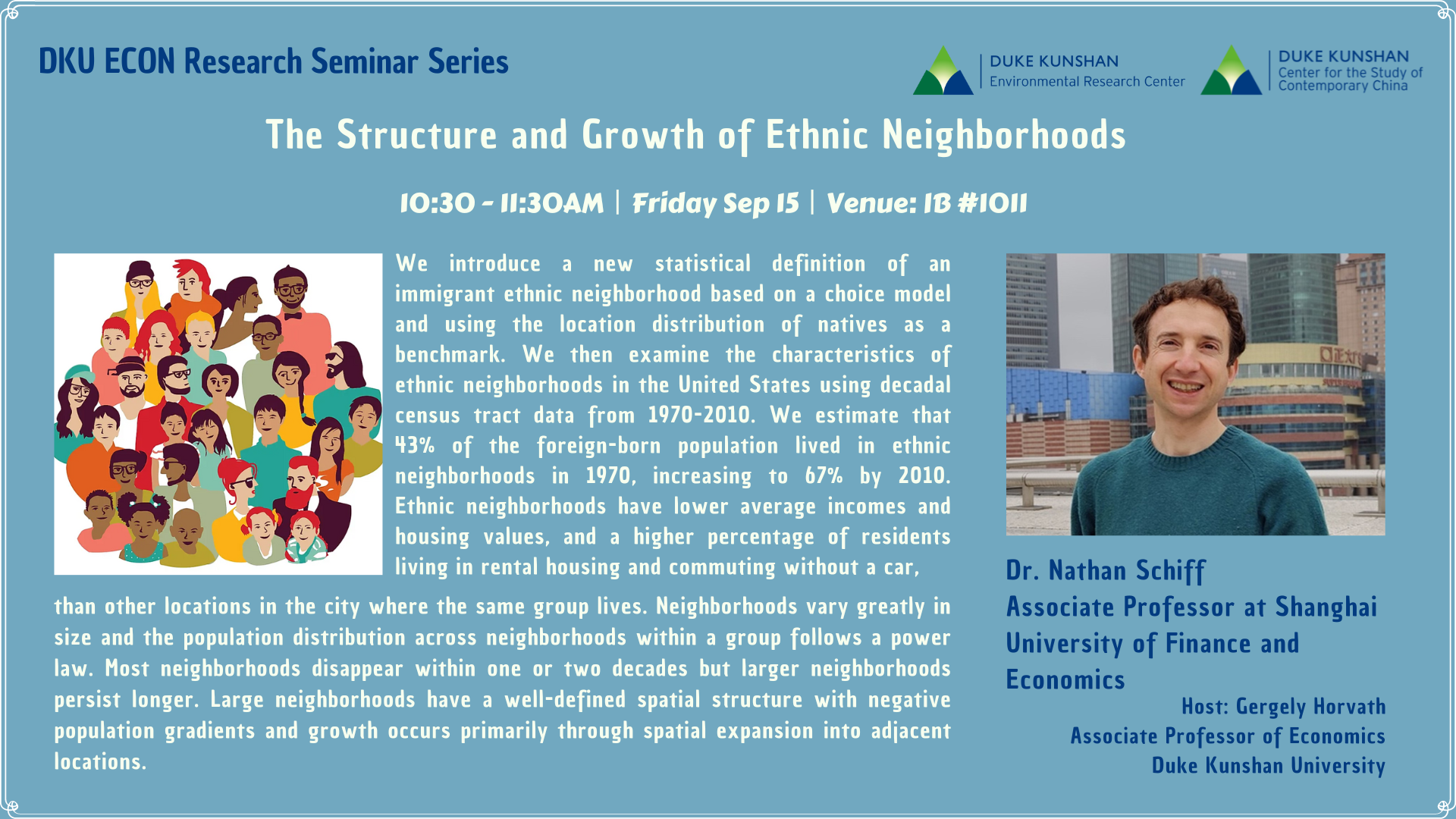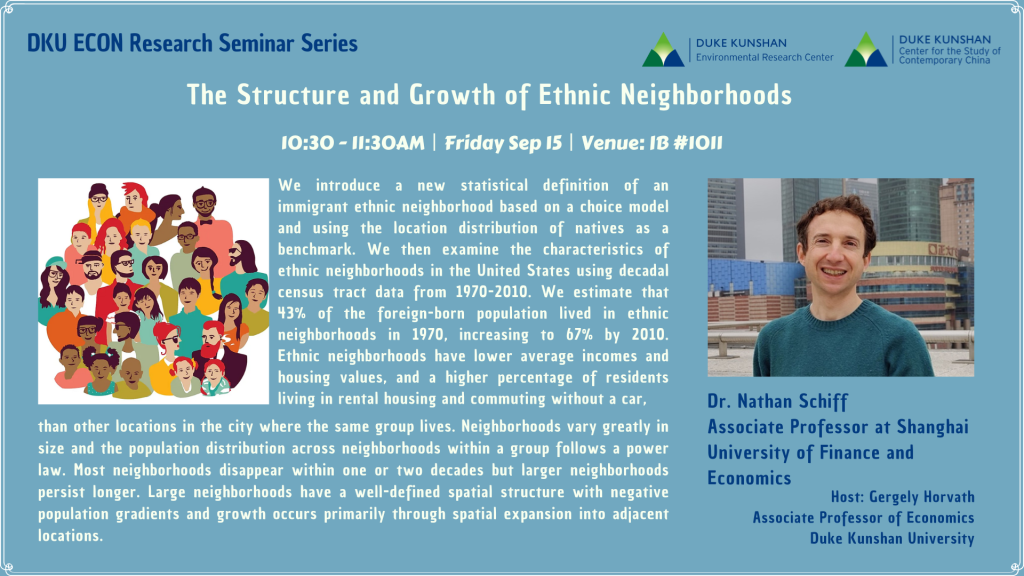
The Structure and Growth of Ethnic Neighborhoods
Abstract:
We introduce a new statistical definition of an immigrant ethnic neighborhood based on a choice model and using the location distribution of natives as a benchmark. We then examine the characteristics of ethnic neighborhoods in the United States using decadal census tract data from 1970-2010. We estimate that43% of the foreign-born population lived in ethnic neighborhoods in 1970, increasing to 67% by 2010. Ethnic neighborhoods have lower average incomes and housing values, and a higher percentage of residents living in rental housing and commuting without a car, than other locations in the city where the same group lives. Neighborhoods vary greatly in size and the population distribution across neighborhoods within a group follows a power law. Most neighborhoods disappear within one or two decades, but larger neighborhoods persist longer. Large neighborhoods have a well-defined spatial structure with negative population gradients and growth occurs primarily through spatial expansion into adjacent locations.




